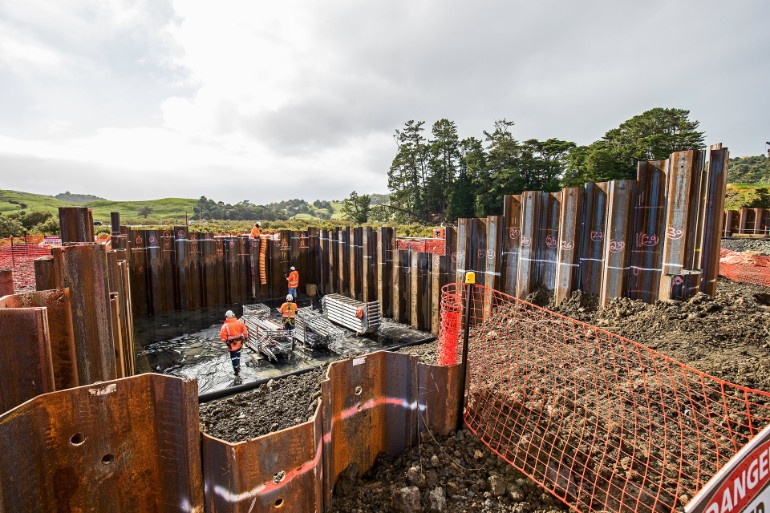BY HON PHIL TWYFORD, MINISTER FOR TRANSPORT, HOUSING & URBAN DEVELOPMENT
The Coalition Government remains committed to delivering a modern and efficient transport system.
It’s been more than a year since this Coalition Government took office. We have spent that time working hard on our vision of making our country a greater place to live and work in, by creating highly liveable cities and thriving regions.
To achieve this, we need to transform our urban environment, prepare for technological changes – particularly in transport – and build more resilient infrastructure.
Choice
The future of our transport system is critical to our economy, and for promoting opportunities for regional development and employment. To unlock this growth, we need to deliver a modern multi-modal transport system that plays to its strengths and allows people and freight to move in the best possible way, whether that is by road, on rail, by air or on the sea.
Providing people and businesses with greater choice is a key priority for this Government. This commitment is reflected through our new GPS which increases funding for public transport, regional roading improvements, state highway maintenance, and provides new investment in rapid transit and rail.
Government Policy Statement
With over $4 billion each year to invest in land transport, the GPS provides guidance on where Government will focus resources. We have a commitment to invest in the best projects, no matter what type of transport modes they may be.
The difference with this GPS is that it creates opportunity by providing a larger construction pipeline and broader mix of programmes so, as a business, it’s an opportune time to diversify and upskill.
Government’s infrastructure pipeline
Last year, the NZ Transport Agency released details on a $16.9 billion programme that sets out how national land transport funding will be used over the next three years.
This is a record investment in our transport system. It will help grow our regions, make it easier to get around our cities, and save lives on our roads.
State highways continue to receive the largest share of funding with a total of $5.7 billion. We are investing $3.5 billion in new state highway projects, including Puhoi to Warkworth, the Waikato Expressway, the Mt Messenger bypass, the Manawatu Gorge replacement, Transmission Gully, and the Christchurch Southern Motorway.
A further $2.2 billion will be invested in state highway maintenance.
To ease congestion and make our cities healthier places to live, nearly $4 billion will be invested in public transport, rapid transit, and rail, with a further $390 million for walking and cycling.
This will fund projects like the AMETI busway, renewal work on Wellington’s rail tracks, the Skypath and Seapath walking and cycleways, and investigation of a new commuter ferry service in Queenstown.
Auckland
As well as investment from the NTLP, the Auckland Transport Alignment Package signals an overall investment of $28 billion over 10 years, focused on accelerating the development of Auckland’s rapid transit network particularly to unlock housing and urban development opportunities.
Large scale projects within the package include completing the City Rail Link, Mill Road in South Auckland, and the Eastern Busway between Panmure and Botany, and Penlink.
We also need to be ready and prepared for the urban development that will occur alongside the new rapid transit network, and particularly around new stations.
Investing in the regions
Infrastructure is critical to the economic performance and quality of life across the nation and in our regions. Improving the infrastructure lifts overall productivity, diversifies our economy and creates new opportunities.
As reflected in the NLTP, most roading investment will go to the regions, rather than the big cities. This reverses the situation in the last three years, when most of roading investment went to the metro centres.
In total, our regional roads will receive $5.8 billion of funding, a $600 million increase. This investment will create new economic opportunities, improve freight connections to ports, airports and distribution centres, as well as make travelling safer.
Safety
Improving the safety of our transport system is a key priority for this Government. That is why we are investing $4.3 billion into programmes and projects that will save lives by preventing accidents or reducing their severity.
This will include revamping intersections to stop collisions, installing median barriers in high-risk areas, and increasing road policing. Roads receiving safety upgrades include Dome Valley, Drury to Paerata, Waihi to Tauranga, and the Hawke’s Bay Expressway.
Opportunities for the sector
We want to work closely with the sector to ensure they are kept informed of the pipeline of work coming to market, to ensure confidence in place to retain staff.
There will continue be a sizable programme of work, however the nature of the new programme results in a greater proportion of small to medium sized works across the regions as well as capacity improvements in large urban areas.
Summary
Overall, the Government is investing heavily in new infrastructure over the next decade and we are committed to working with industry to upskill the sector and deliver innovative infrastructure that makes life better for New Zealanders.
Developing affordable housing for future generations and providing a safe, accessible modern transport system will play a major role in this.
This will take skill, foresight and innovation from this industry.
I am looking forward to working with you to do this.


Parting words from Jeremy Sole- a final column